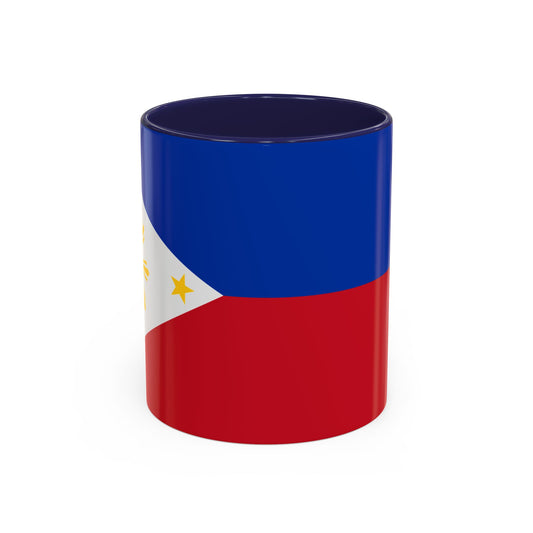-
Sierra Leone Mug
Regular price $11.65 USDRegular priceUnit price / per -
Philippines Flag Sweatshirt
Regular price $34.15 USDRegular priceUnit price / per -
Pilipinas Sweatshirt
Regular price $34.15 USDRegular priceUnit price / per -
Philippines Sweatshirt
Regular price $34.15 USDRegular priceUnit price / per -
Philippines Pillow
Regular price $22.65 USDRegular priceUnit price / per -
Philippines Backpack
Regular price $59.79 USDRegular priceUnit price / per -
Philippines Leather Patch Hat
Regular price $18.85 USDRegular priceUnit price / per -
Philippines Mug
Regular price $11.65 USDRegular priceUnit price / per -
Philippines Trucker Cap
Regular price $14.90 USDRegular priceUnit price / per -
Pilipinas Hoodies
Regular price $34.40 USDRegular priceUnit price / per -
Pilipinas T-shirts
Regular price $22.79 USDRegular priceUnit price / per -
Philippines Hoodies
Regular price $34.40 USDRegular priceUnit price / per -
Philippines T-shirts
Regular price $22.79 USDRegular priceUnit price / per -
Philippines Flag Hoodies
Regular price $34.40 USDRegular priceUnit price / per -
Philippines Flag on T-shirt
Regular price $22.79 USDRegular priceUnit price / per
Collection: Philippines
The Philippines flag symbolizes the Filipino people's national pride and identity. With its unique design and colors, it represents the country's rich history and culture. We will explore the exciting facts and etiquette surrounding the flag of the Philippines.
Overview of the Philippines Flag Design and Colors

The flag of the Philippines showcases a striking and meaningful arrangement, comprised of a horizontal bicolor with blue atop a red and a prominent white equilateral triangle on the hoist side. Within this triangle lies a radiant golden sun adorned with eight significant rays, each pointing outward. Surrounding the sun are three stars, each positioned at a corner of the triangle, symbolizing the three major geographical groups of the country: Luzon, Visayas, and Mindanao.
The selection of colors and symbols is deeply imbued with the nation’s values and historical struggles for independence. The vivid blue stripe symbolizes noble ideals such as peace, truth, and justice, whereas the vibrant red stripe conveys the courage and sacrifice of the Filipino people. The white triangle represents purity, equality, and brotherhood, foundational to the nation’s identity. Beyond its visual appeal, this flag is a narrative of the Philippines' enduring quest for sovereignty and the democratic values that guide the country.
Historical Context of the Philippines Flag
The inception of the Philippines flag traces back to a pivotal moment in the nation's history, marking its independence from Spanish rule on June 12, 1898. This day saw the birth of a sovereign state and the unfurling of a national emblem that would symbolize the Filipinos' relentless pursuit of freedom and self-determination. Crafted by Emilio Aguinaldo, a prominent figure in the Philippine Revolution, the flag's original design has undergone slight modifications over time to reflect the evolving narrative of the nation. The initial version featured a lighter shade of blue, representing the country's quest for peace through unity, and an unspecified number of rays on the sun, which was later standardized to eight to highlight the first provinces that took up arms against Spanish domination.
The flag has been a beacon of hope and resistance across several historical milestones, including the tumultuous Philippine-American War and the dark times of World War II. During these periods, the flag not only represented the country's sovereignty but also rallied the Filipino people together in defense of their freedoms. Its presence has been a constant reminder of the sacrifices made by countless individuals in the name of national identity and independence.
Symbolism Behind the Philippines Flag

The symbolism of the Philippines flag is rich and nuanced, encapsulating the Filipino people's core values and historical triumphs. The vibrant blue stripe embodies the nation's aspirations for peace, truth, and justice as a beacon of the fundamental principles guiding its citizens. Conversely, the bold red stripe vividly portrays the courage and patriotism deeply ingrained in the national consciousness, reflecting the sacrifices to pursue freedom and sovereignty. The white triangle signifies equality and fraternity at the flag's foundation, emphasizing the unity and brotherhood that fortify the country's spirit.
Within this triangle, the golden sun shines brightly, a symbol of liberty and the dawning of a new era of democracy. The sun’s light rays are a tribute to the eight pioneering provinces that bravely initiated the fight for independence from colonial rule. Surrounding the sun, the three stars glitter as symbols of the archipelago's three principal regions—Luzon, Visayas, and Mindanao—highlighting the geographical and cultural diversity of the Philippines. Together, these elements weave a narrative of struggle, hope, and unity, forming a visual representation of the nation’s ideals and the indomitable spirit of its people.
Current Relevance of the Philippines Flag
Today, the flag of the Philippines remains a powerful emblem, deeply woven into the fabric of daily life and national consciousness. It flies high during significant occasions such as Independence Day, heroes' commemorations, and various state functions, symbolizing the enduring spirit and unity of the Filipino people. Beyond formal ceremonies, the flag is a constant in schools, public buildings, and homes, serving as a reminder of the nation's sovereign identity and the democratic values it stands for. In recent times, discussions around the flag have emerged, particularly focusing on its respectful treatment and the proper context of its display. Debates on digital representations and modifications of the flag in social media or for commercial use have prompted a reevaluation of laws and guidelines to ensure the dignity of the national symbol is maintained. Such dialogues underscore the flag's ongoing relevance as a living symbol that evolves with the society it represents, highlighting its role in shaping and reflecting Filipino identity in the contemporary era.
Additional Facts and Etiquette Surrounding the Philippines Flag
The Philippines flag is governed by a set of protocols that underscore its significance and the respect it commands. Notably, the flag’s display is subject to the country’s current state; during peacetime, the blue stripe is positioned atop, whereas, in wartime, the red stripe is hoisted above to signal the nation’s stance. Observance of proper conduct during flag-raising or lowering ceremonies is crucial. Individuals are expected to exhibit respect by standing at attention, facing the flag, and rendering the appropriate salute, reflecting the solemnity of the moment.
It is considered disrespectful for the flag to come into contact with the ground or any items below it, underscoring the importance of handling the flag with utmost care. In addition to these protocols, the flag’s presence is accompanied by certain practices during public observances. Saluting the flag while the national anthem plays or during the pledge of allegiance is a common practice that reinforces the sense of patriotism and unity among the Filipinos.
Moreover, displaying the flag at night requires it to be properly illuminated, ensuring its visibility and significance are maintained around the clock. Similarly, in adverse weather conditions, the flag should be respectfully taken down to prevent damage, reflecting the care and reverence it deserves. These etiquettes not only foster national pride but also instill a sense of responsibility and respect for the symbol that unites the Filipino people.
































